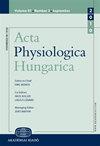The acute muscular effects of cycling with and without different degrees of blood flow restriction.
引用次数: 16
Abstract
The aim was to compare the acute effects of work matched high intensity (75% peak aerobic capacity) aerobic exercise to low intensity (40% peak aerobic capacity) aerobic exercise with different degrees of blood flow restriction (BFR) [40% estimated arterial occlusion (40 BFR) and 60% estimated arterial occlusion (60 BFR)] on variables previously hypothesized to be important for muscle adaptation. There were no meaningful changes in torque. Anterior thigh muscle thickness was increased from baseline with high intensity cycling and 40 BFR (~2 mm increase, p ≤ 0.008). A significant increase in lactate occurred in all exercise conditions but was greatest with high intensity cycling (~5.4 mmol/L increase). Muscle activation was significantly higher with high intensity cycling compared to low intensity cycling with BFR, regardless of pressure (~25% vs. ~12% MVC). Mean power frequency was not different between conditions but did increase from the first 5 minutes of exercise to the last 5 minutes (93% vs. 101%, p < 0.001). Ratings of perceived exertion (RPE) were higher with high intensity cycling but discomfort was similar between conditions. We wish to suggest that high intensity cycling produces greater muscular stress than that observed with work matched low intensity cycling in combination with BFR.有和没有不同程度的血流限制的骑车的急性肌肉效应。
目的是比较工作匹配的高强度(75%峰值有氧能力)有氧运动与低强度(40%峰值有氧能力)有氧运动在不同程度的血流量限制(BFR)[40%估计动脉闭塞(40 BFR)和60%估计动脉闭塞(60 BFR)]对先前假设的对肌肉适应重要变量的急性影响。扭矩没有明显的变化。高强度循环和40 BFR组大腿前肌厚度较基线增加(约2 mm, p≤0.008)。乳酸在所有运动条件下均显著增加,但在高强度循环时增幅最大(约5.4 mmol/L)。无论压力如何,与低强度循环相比,高强度循环的肌肉激活明显更高(~25% vs ~12% MVC)。平均功率频率在不同情况下没有差异,但从运动的前5分钟到最后5分钟确实增加了(93%对101%,p < 0.001)。高强度骑车时,感知运动强度(RPE)评分较高,但两种情况下的不适程度相似。我们希望表明,高强度的循环产生更大的肌肉压力比工作匹配低强度循环结合BFR观察到的。
本文章由计算机程序翻译,如有差异,请以英文原文为准。
求助全文
约1分钟内获得全文
求助全文

 求助内容:
求助内容: 应助结果提醒方式:
应助结果提醒方式:


